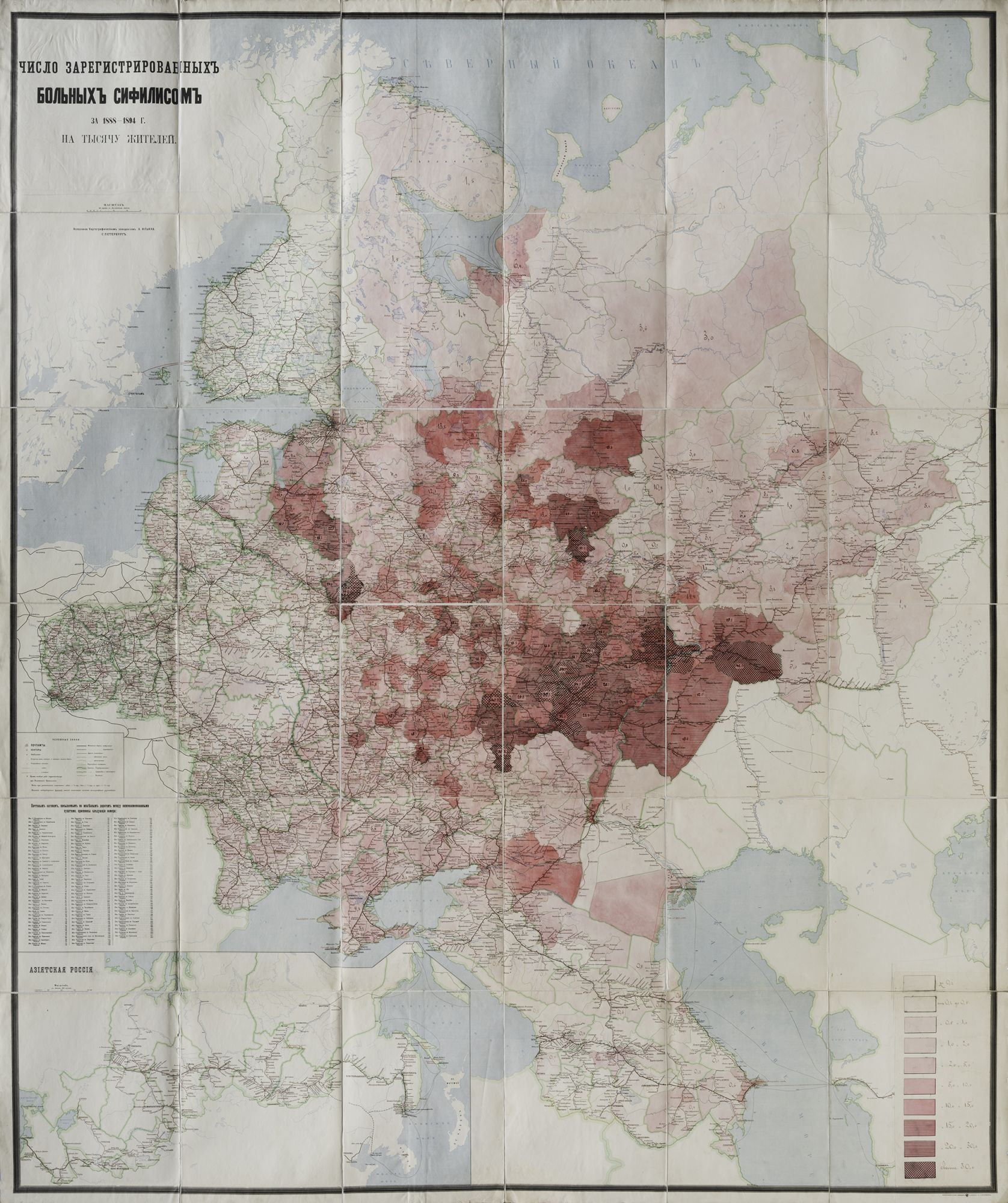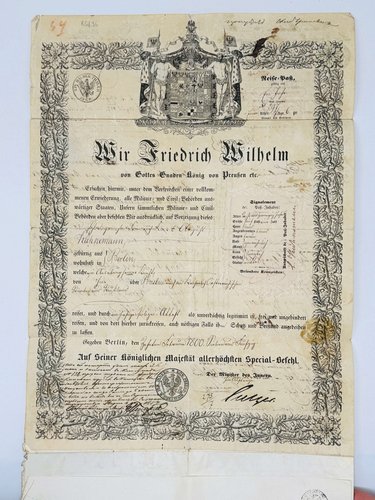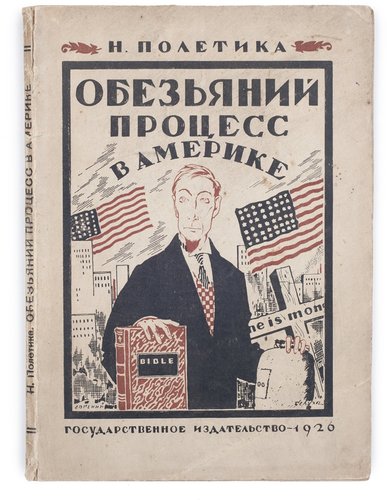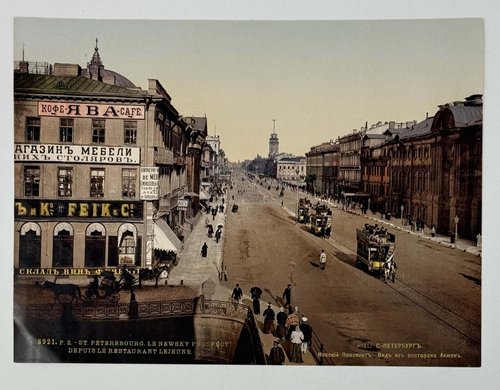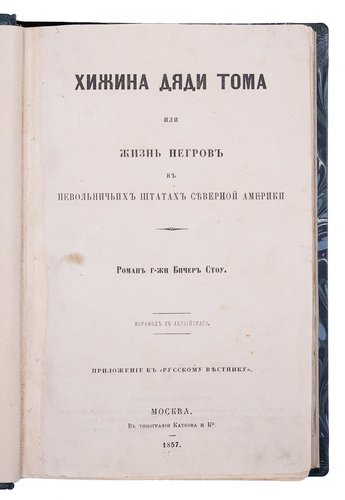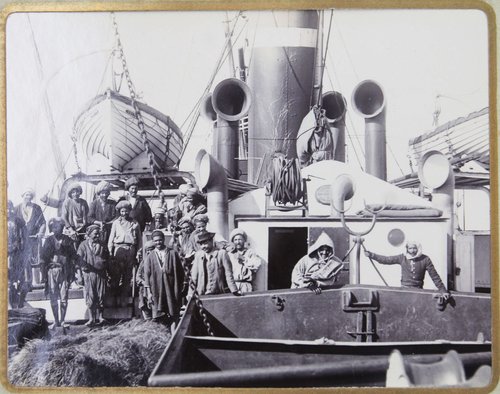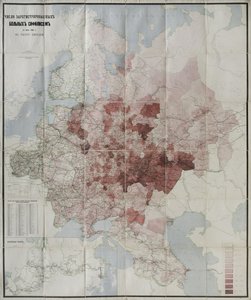
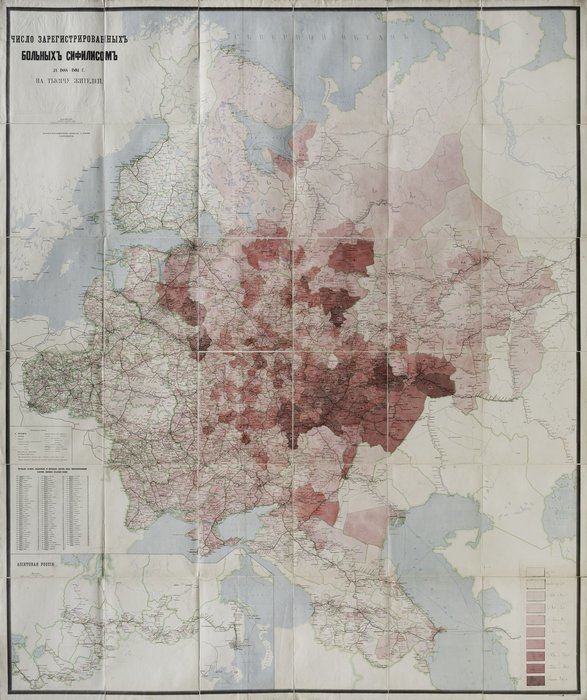
#BK2342
1894
232 х 192 cm. Very good condition.
Map, likely done in 1 copy only, that shows the spread of syphilis in different parts of Russia in the late XIXth century – manuscript over print, it’s likely was created for the official use, as this information was not intended for the public.
The map that was used for the purpose is the postal wall map of European Russia. The legend indicates the post offices and postal headquarters, as well as the details on the postal trains in operation between the provinces of the empire. The two parts of the map, the upper left corner and the lower right corner were cut out and the supplied parts of the map added – one with the title, which is printed likely from some kind of rubber form, and one with the numbers of registered syphilis patients – starting from 0,2 per X to more than 30 per X. Unfortunately, the map didn’t specify what X is, but one can make a reasonable guess about it (see below).
The colouring on the map itself is done by hand as well, the darker areas are the ones with the denser population of the patients, while the lighter indicates the areas closer to 0,2. As the numbers like these were not available to the public, we can presume that the map was done for some kind of medical administration office, or perhaps to showcase the paper or talk for internal use in Ministry of Health around the time. The Asiatic part of Russia is shown in the lower left corner.
Syphilis is known in Russia at least from the beginning of XVIIIth century. During the century, ‘the French disease’ was treated in secrecy and sometimes being prosecuted for having it. In 1763, a “secret” hospital for syphilis patients was opened in St. Petersburg with 30 male and 30 female beds, under the management of doctor D. Samoilovich. Patients admitted to it did not give their names and could wear masks. Outsiders were not allowed into the hospital premises.
A separate decree described measures for the treatment of women with syphilis; on May 17, 1793, a decree was issued “On the treatment of dissolute women obsessed with Franz Veneria, and on their exile to settlement.” The initiator of the decree was St. Petersburg Governor General A. I. Glebov. In his petition to the Senate, he writes that as of April 26, 1793, of the 671 patients in the St. Petersburg hospital, a significant portion were there because of syphilis infection.
The mandatory registration of syphilis patients was introduced in 1843, the same year the ‘yellow ticket’ rule was established for Empire’s sex workers. In 1867, Professor V.M. Tarnovsky spoke about the need to separate syphilology into a separate science. He stated that for a long time, while the treatment of syphilis was limited only to external manifestations, the disease was related to surgery, but in the light of recent advances in science, it became clear that the treatment of syphilis is impossible without understanding the pathological processes occurring in the human body.
A new surge in morbidity was observed at the end of the 19th - beginning of the 20th century; due to wars and revolutions, the quality of medical care fell sharply, and the number of patients increased.
According to the medical department, in 1904 the incidence of syphilis in the Russian army was 9.76%, in 1905 - 14.74%, in 1906 - 17.85%, in 1907 - 19.79%.
Also according to Sexual census of Moscow students, conducted by physician M. A. Chlenov in 1907, 2,7% of students had syphilis in Moscow University. From those numbers one can try to guess what was the 0,2-30 per X in this map. Surprisingly on the map the highest density of the cases is registered not around capitals, but in the South of European Russia, areas close to Lipetsk and Voronezh.

